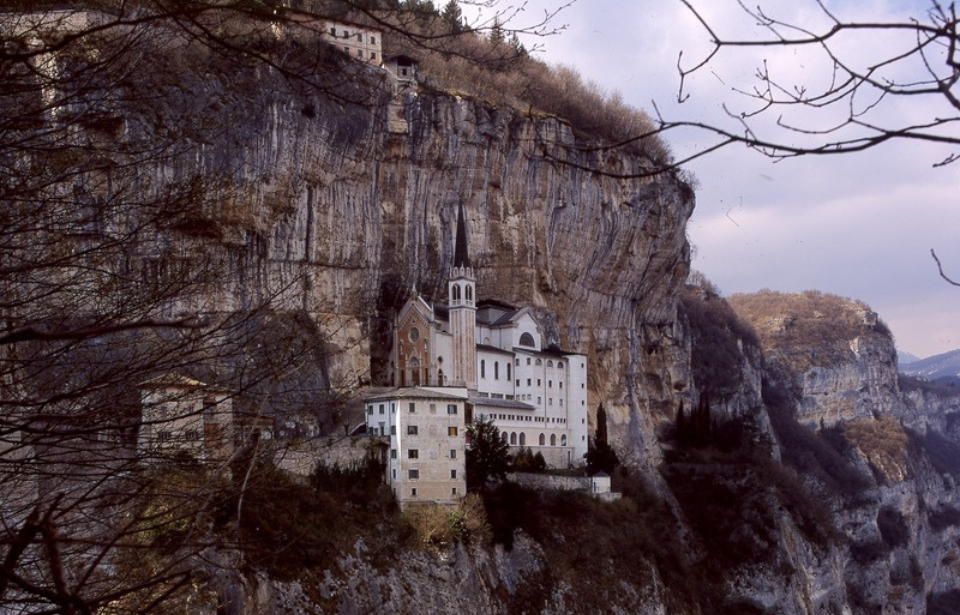Located high above the Adige River near Spiazzi, Italy, is the incredible Santuario Madonna della Corona. This sanctuary sits at 774 meters above sea level, more than twice the height of the Eiffel Tower. It’s nestled tightly against the rock face of the Monte Baldo cliffs, with the rock acting as part of the wall within the chapel.
Although reaching the Santuario is much easier with the addition of modern innovations, it was once an extremely difficult location to visit due to how high it’s situated on the cliffs. Why was a place of worship built in such an inaccessible location? According to legend, it was supernatural forces that dictated the chapel’s location.
Miraculous beginnings
This was considered a holy site long before the current chapel was built. There is evidence that monks from the nearby city of Verona came to the spot around the year 1000 to set up a hermitage where they could live secluded from the rest of society and focus on their worship of the Madonna – Mary, the mother of Jesus Christ.
Legend says that the site became something truly special after a mysterious apparition. Villagers in the Adige Valley noticed a sparkling light coming from the cliffs high above them. Intrigued, they decided to venture up the rock face to see what was causing the phenomena.
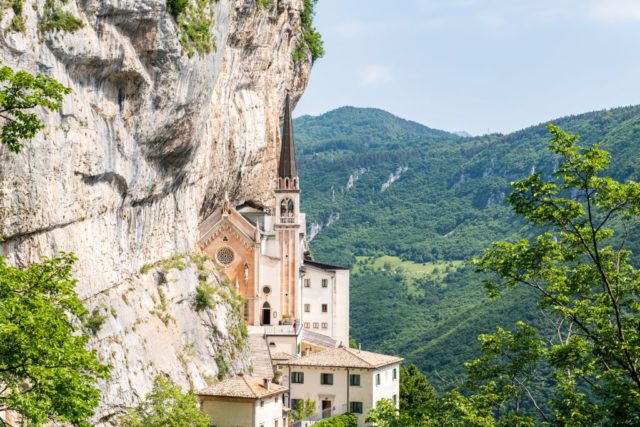
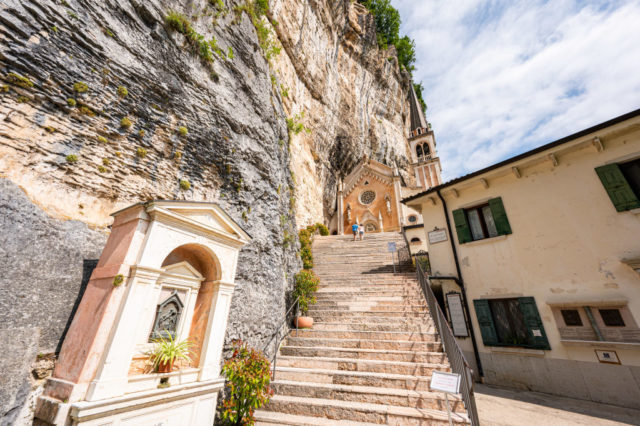
When they arrived at the location, they allegedly found a statue of Madonna holding the body of Jesus Christ as if he had just been removed from the cross. Deciding that this was something special, the villagers wanted it to be moved down to their village where it could be a site of worship. Yet legend has it that after they brought it down the mountain, they woke up the following day to find that the statue was back in the same spot where they had discovered it. And this happened more than once.
An angelic sign
As there was no explanation for how the statue kept moving back to the cliffs, the locals decided that they would build their place of worship around the statue instead of moving it down to their village again.
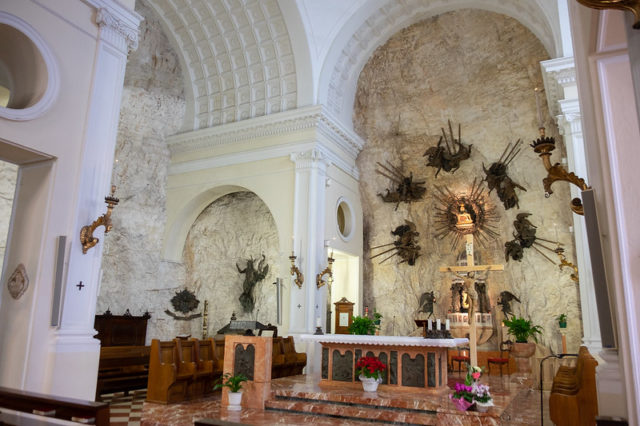
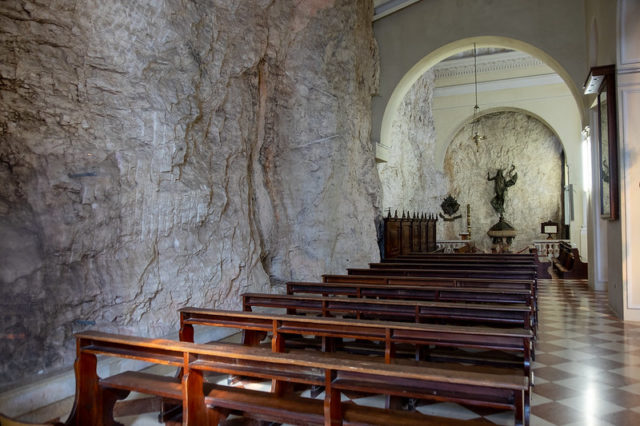
Another element of the legend says that the statue originally came from the Greek island of Rhodes. This island was controlled by crusading knights until an attack was launched by the Ottomans to take the area back. When the knights fled, it’s the statue was allegedly teleported to the Italian mountain where it remains today. While this is an enticing legend, it is likely false, as the Ottoman invasion occurred in 1522 while the sanctuary was already at least partially built by the 14th century.
The only real connection between Rhodes and the Santuario Madonna della Corona is that some of the knights who had been on the island ended up controlling the chapel for nearly 400 years. There is a chance they could have carried the statue with them after they faced the Ottoman invasion, but it is more likely that the statue was already there before they arrived.
A new chapel
Nonetheless, these crusaders, the Knights of St. John, played a major role in the evolution of the Santuario. They wanted to turn it into a true pilgrimage site for those seeking a closer connection to God. They created a new bridge to make the chapel more accessible. Despite the chapel being there as early as the 13th century, the only way to reach it until the late 1400s was to travel across a dangerous and narrow path in the rock.
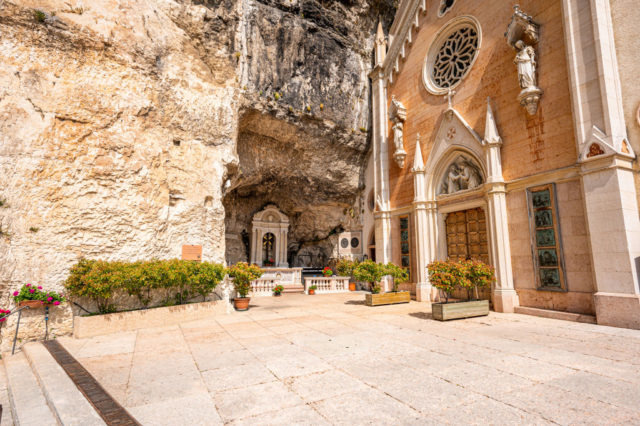
A wooden bridge was built in the valley, making access to the place of worship easier. The knights also began construction of a new church over top of the old chapel. New stairs were also constructed leading to the front of the new building. This wasn’t the last time that the church was remodeled, as a larger new one was started in 1625 and finished in 1685. There was an additional extension made in the 19th century.
Later history
Improvements continued over the years, including the relatively late addition of the bell tower in the 1920s. Only a short 19 years later, the Second World War began and wreaked havoc on many of the world’s historical monuments. Fortunately, due to its secluded location, the chapel remained unharmed.
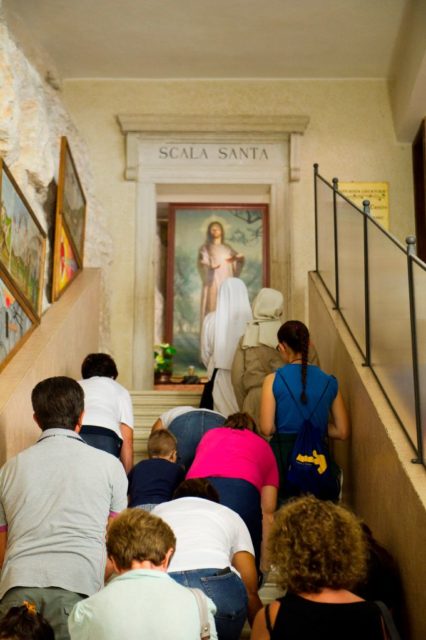
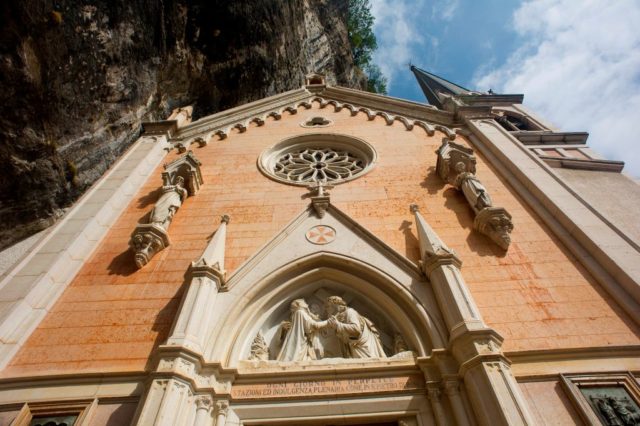
The Santuario remains extremely popular with the public as a site of pilgrimage and now hosts roughly 40,000 people a year. Although much of the site is original, there was some reconstruction done in the 1970s to help fix damage to the 19th-century addition. This was an extensive remodel that extended the church dramatically, requiring the architect to build into the side of the mountain and giving it the appearance of being suspended in mid-air.
More from us: From Riches to Ruins: New York’s Haunted Bannerman Castle
Although the site has been modernized to make it more accessible to the general public by including a shuttle bus service, it can still be a difficult place to venture to for those that chose to take the authentic hiking route. For many, the adventure there is worth it to view the chapel said to be suspended “between Heaven and Earth.”
